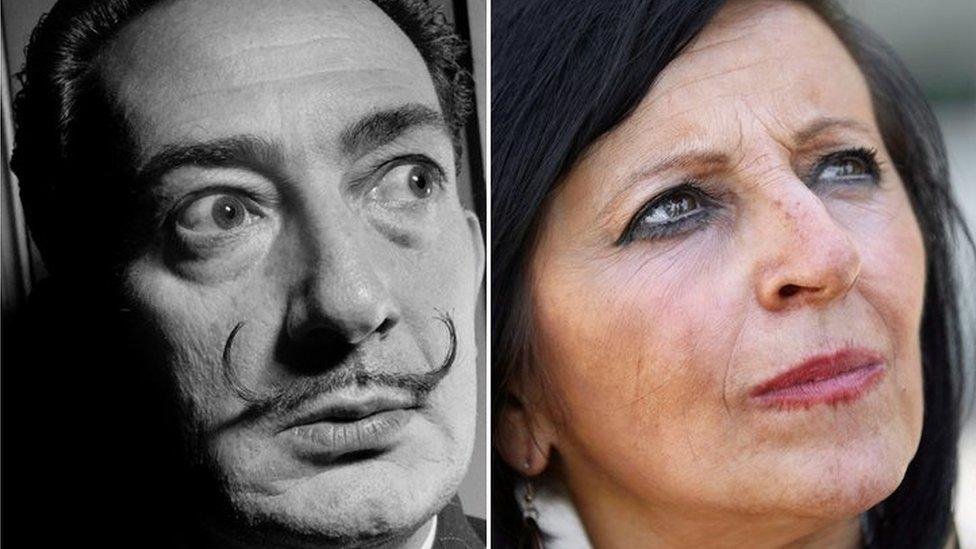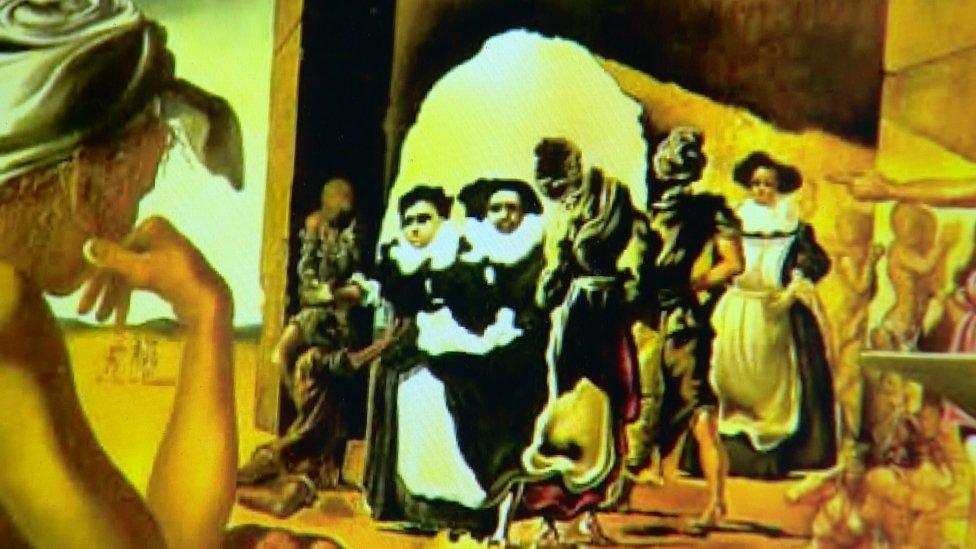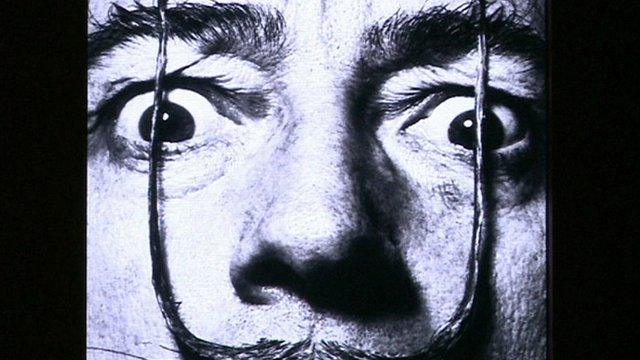Painter Salvador Dali's body to be exhumed for paternity suit
- Published

Dalí died in Spain in 1989 and had no children with his wife
A judge in Madrid has ordered the exhumation of the body of Spanish artist Salvador Dalí to get samples for a paternity suit.
A Spanish woman, born in 1956, said her mother, a maid, had a clandestine affair with the painter in 1955.
The judge said there were no biological remains or personal objects of the artist to be used in the test. He died in Spain in 1989 at the age of 85.
The Dalí Foundation, which manages the artist's estate, says it will appeal.
The surrealist painter was buried in the theatre and museum he designed himself, in his home town of Figueres in the north-eastern Catalonia region.
Maria Pilar Abel Martínez, a tarot card reader who was born in Girona, made the paternity claim for the first time in 2015.
BBC Arts: What is surrealism?

Ms Martínez claims that her mother had an affair with the world-famous painter
She said her mother, Antonia, had worked for a family that spent time in Cadaqués, next to where the painter had a home.
Antonia left her job in 1955, moved to a different city and married another man.
Ms Martínez claimed that her mother told her several times that Dalí was her father, on many occasions in front of others.
"The only thing I'm missing is a moustache," she once said, according to newspaper El Mundo (in Spanish)., external
At the time of the alleged affair, Dalí was married to his muse Gala, born Elena Ivanovna Diakonova. The couple had no children.

Salvador Dalí is best known for his surrealist works
The decision also cites that Ms Martínez underwent two paternity tests, both in 2007, but never received the results.
Her legal action is against the Spanish state, to which Dalí left his estate.
If she is confirmed to be the artist's daughter, she could use his surname and be entitled to part of his estate - but Spanish media say she would have to legally request it.
Ms Martínez's lawyer said there was no date for the exhumation, but that it could happen as soon as July.
The Dalí Foundation said in a statement, external that an appeal would "be lodged in the coming days."

Other notable exhumations
Richard III: When a skeleton was found underneath a Leicester car park in 2012, archaeologists hoped they may have found the last Plantagenet king. The next year, it was confirmed the bones did belong to Richard III, who was killed in battle in 1485. The monarch was interred in a more fitting location - that of Leicester Cathedral - in 2015.
Lech Kaczynski: It did not take long for the rumours to start after the Polish president and a number of other senior figures - including the country's army chief, central bank governor, MPs and leading historians - were killed in a plane crash in 2010, external. But it took another six years for their bodies to be exhumed. And when they did, what they found was nothing less than baffling. The remains had been mixed up - with Mr Kaczynski's coffin containing the bodies of two other people.
Nelson Mandela's children: As the South African president lay dying in 2013, three of the children who predeceased him were in the process of being exhumed. It was the second time the bodies had been dug up: Mr Mandela's grandson Mandla had first moved them from the family graveyard in 2011, allegedly without the family's consent.
Pablo Neruda: The Nobel prize-winning Chilean poet was exhumed in 2013, 40 years after he died of prostate cancer. It was rumoured Neruda - whose death came days after the military coup which brought General Augusto Pinochet to power - may have been poisoned. The exhumation did not find any poison, but did find an unexplained bacterial infection before he was reburied in 2016.
Lots of people in Madagascar: Some people on the African island exhume their relatives as an act of love and respect.
And finally... a goose: Police in Hertfordshire exhumed the body of a goose, investigating allegations it was shot dead at point-blank range. A post-mortem found he had died of natural causes.
Read more about famous faces who were exhumed throughout history here.
- Published21 April 2016

- Published18 June 2013
- Published21 November 2012

- Published5 August 2010